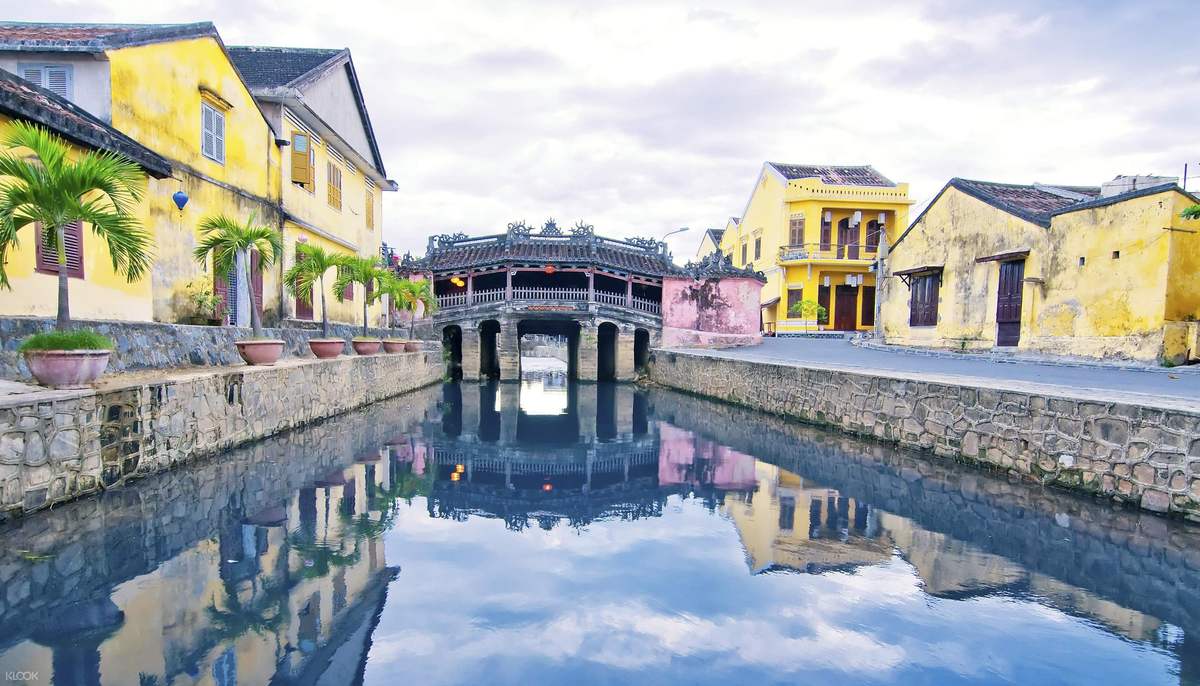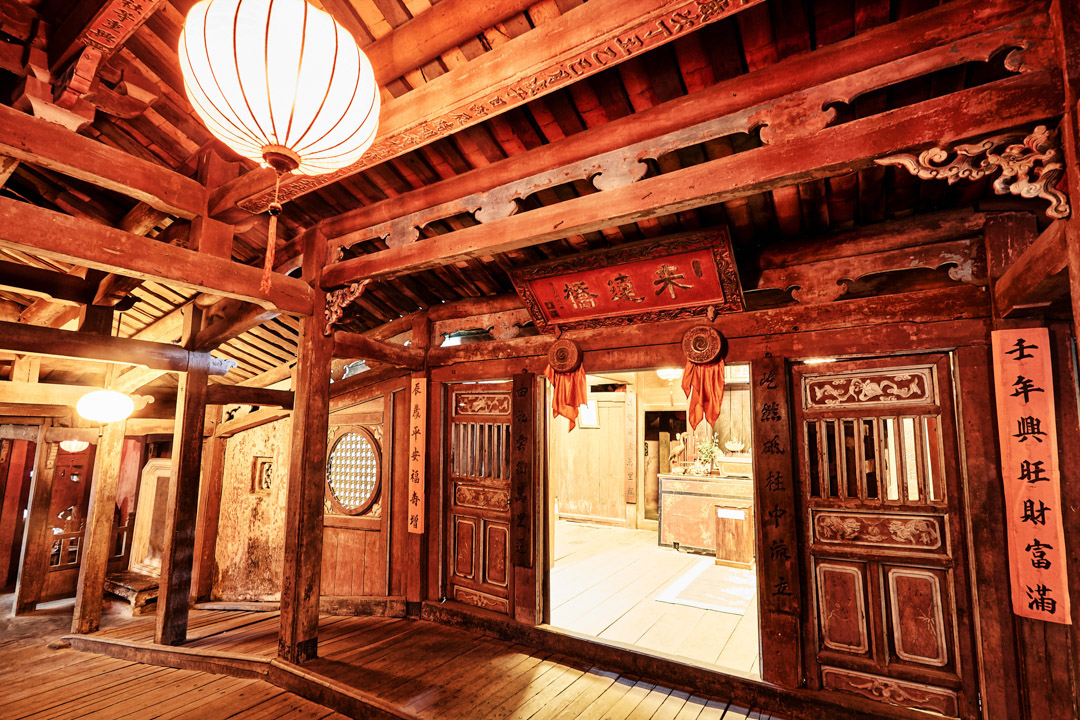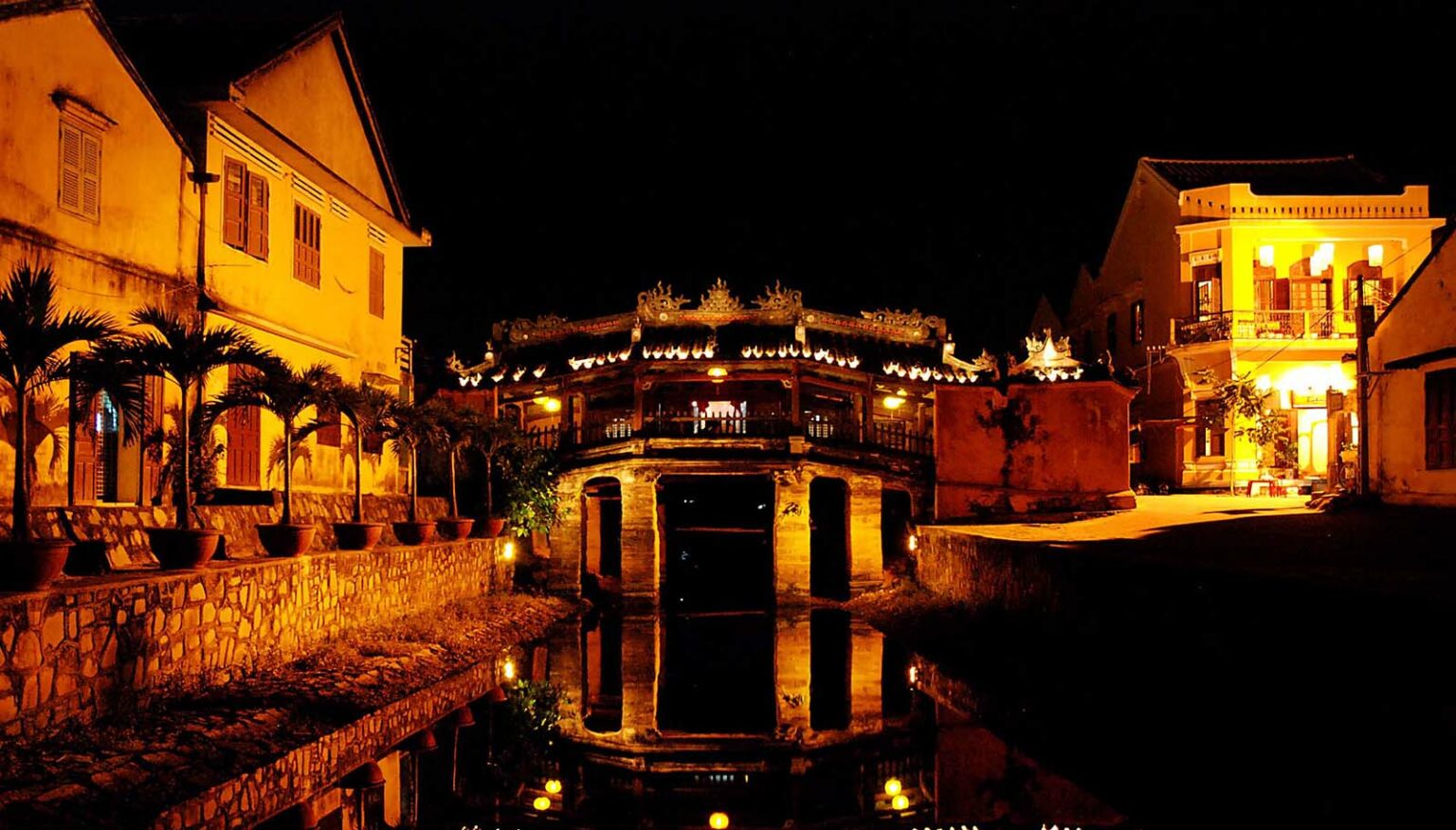Japanese Bridge in Hoi An is an iconic symbol of Hoi An Ancient Town, a tourist attraction and a well-designed construction. It has the honor of being printed in Vietnam’s 20,000 VND banknote.
Located in Hoi An Ancient Town – A UNESCO World Heritage Site, the Japanese Bridge Hoi An is one of the most attractive cultural destinations in Vietnam. Being built in the 17th century, this monument has witnessed numberless changes in the town. Coming to Hoi An City, you won’t regret visiting this place.

1. About Japanese Bridge in Hoi An
The Japanese Bridge in Hoi An is regarded as a beautiful reminder of the town’s long history. The bridge has connected the past, the present and the future over centuries.

1.1. History of Japanese Bridge in Hoi An
The Japanese Bridge in Hoi An, known as Cau Pagoda (Chùa Cầu), was built in the 17th century with Japanese businessmen’s assistance. As a result, the bridge has been associated with a monster’s legend called Namazu. Specifically, Namazu is a Japanese mythological monster whose movements cause earthquakes and floods. Its head is located in India, while its body is in Vietnam and its tail in Japan.
:max_bytes(150000):strip_icc()/GettyImages-148877630-0b5be75aa96c4cb0972529032f5cfb12.jpg)
The bridge was built with the belief of a magical sword to pin down Namazu’s back. Therefore, the monster could not wriggle, preventing natural disasters in Vietnam, Japan, and India. Hence, the lives of people in these three countries would happen in peace and prosperity.
In 1719, Lord Nguyen Phuc Chu visited Hoi An and carved the bridge’s name in 3 Chinese characters on the entrance, which means “Lai Vien Kieu” in Vietnamese and “the bridge to receive guests from afar” in English. Besides, the pagoda was named “Japanese Bridge” or “Japanese Covered Bridge” since it was mainly constructed by Japanese people.
On February 17, 1990, the bridge was recognized as a National Historic – Cultural Heritage Site.
1.2. The architecture of the Japanese Bridge
The bridge is 18 meters long, connecting Tran Phu Street (the Chinese quarter) on the eastern side and Nguyen Thi Minh Khai Street (the Japanese quarter) on the western side. It crosses the Thu Bon River, bringing a serene and nostalgic atmosphere.
The bridge and the top were built mainly with red lacquered wood, while the base was constructed with stone. Although it is commonly called “Japanese Bridge”, the architecture is an ingenious combination of Vietnamese, Japanese and Chinese culture, from the material, design to patterns and decorations.

The bridge highlights the Japanese style with a stunning curved roof, which covers every inch of the bridge. The roof was decorated with yin and yang patterns, which represents Vietnamese culture and architecture.
There are small corridors and benches for visitors to relax and enjoy the pure air on each side of the bridge. The temple is separated from the bridge by a thin wooden wall.
At the entrance and at the exit of the bridge there is a dog and a monkey respectively. They represent the guardians of the bridge, since they symbolize protection and safety in Japanese culture. It is also said that these two statues marked the beginning of the construction in the year of Monkey and the completion in the year of Dog.
1.3. The renovation of the Japanese Bridge
The Japanese Bridge in Hoi An has gone through 7 renovations over 400 years, particularly in 1763, 1815, 1875, 1917, 1962, 1986, and 1996. Some small adjustments have been made on the roof, floor, and pillars.
The Minh Huong Commune, a village in Hoi An at that time, was accredited for the first 3 renovations of the bridge. During the French colonial period, the French converted the pedestrian-only bridge into one that supports motorized vehicles in 1917.
:max_bytes(150000):strip_icc()/GettyImages-148855247-b4b77957915d404d809bdf36c28fc9ce.jpg)
In 1962, the Quang Nam provincial government continued to repair the Japanese Bridge. The bridge was restored to its original pedestrian-only design in 1986. The last two renovations in 1986 and 1996 were regarded as the most substantial ones.
The bridge has been downgraded since the last renovation due to various floods in Hoi An City. Many poles and beams that support the bridge have deteriorated, emphasizing urgent maintenance before it collapses.
Therefore, the Quang Nam provincial government approved a nearly one-million-dollar project to preserve the bridge. The actual work started in early 2020, aiming to maintain the bridge’s existence.
2. Interesting facts about the Japanese Covered Bridge
Before visiting the Japanese Bridge in Hoi An, you should read this useful information to understand more about the specialty of these cultural relics.
2.1. The Vietnamese Dong bill features the Japanese Bridge in Hoi An
The Japanese Bridge in Hoi An has been a symbol and a soul of Hoi An Ancient Town. An image of the bridge was chosen to print on the back of Vietnam’s 20,000 VND banknote, ensuring the special meaning of this famous place to Vietnamese people.

2.2. The temple does not worship Buddha
Unlike other temples, the Cau Pagoda does not worship Buddha, but venerates the northern deity Tran Vo Bac De, the god of happiness, wealth and health in Hoi An. Therefore, the Bridge Pagoda in Hoi An is not only a prominent tourist attraction, but also a religious site for local people to ease their minds and pray for best wishes.

2.3. The Japanese Bridge has two separate parts
The Bridge Pagoda in Hoi An has two distinguished parts: the bridge and the temple. Therefore, it was called “Chua Cau” in Vietnamese (“Chua” = “temple”, “Cau” = “bridge”).
The bridge was built first over the Thu Bon river, while the temple was built 60 years later on the north side of the bridge. Once you decide to visit the monument, you should not miss any of these two places.


